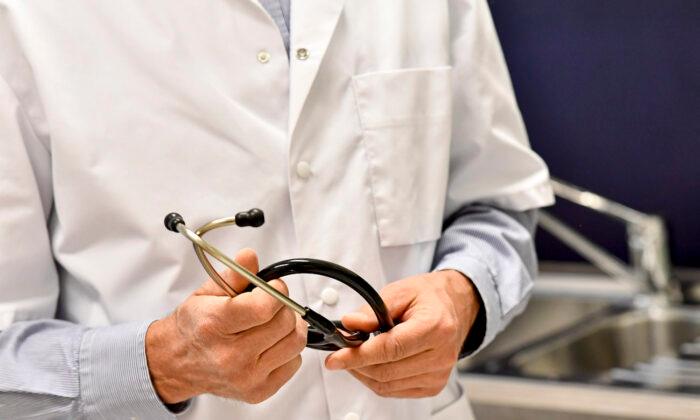Bright pearly whites might look healthy but beneath the sparkling smile may lie an ugly truth.
A drastic increase in at-home teeth whitening could be causing untold damage to thousands of Australians mouths, with people excessively bleaching their tooth enamel in the quest for the perfect selfie.
The Australian Dentistry Association’s 2021 consumer survey of 25,000 Australians found 22 percent had whitened their teeth—an increase of eight percent since 2017.
More than twice as many women than men have them whitened and the trend is most popular in those aged 24-34, the survey found.
But most alarming is the number of people buying DIY kits, says the ADA’s teeth whitening expert, Sydney dentist Dr Fadi Yassim.
Only one in three whiten their teeth under the supervision of a dental professional, with the rest buying kits online or over the counter and nearly one in 10 using whitening services provided by non-dentist professionals.
“The reason for the increase in whitening is multi-factorial,” Yassim told AAP.
“There is increased awareness through social media and online platforms; treatment being more readily available and at a much lower cost; clients placing more value on teeth aesthetics as it is normally associated with beauty and good health; and of course, celebrity and social media influencers being known to have had teeth whitening which has popularised the procedure.”
Dr Justina Teo from Advanced Dental Artistry considers “yellow teeth shame” a direct result of this generation’s obsession with selfies and social media but said it was important to remember teeth aren’t meant to be brilliant white.
“Teeth naturally have a yellow shade to them due to the dentine under the enamel,” Teo said.
“Dentine is the yellow tissue that makes up the bulk of the tooth and it’s generally more opaque than enamel. Stains can also be picked up by pigments from the foods we eat or drink.”
Transforming yellowing teeth to white may be as simple as a dental scale and polish to remove stains, plaque and tartar, Teo said.
“A dentist is the best person to help diagnose the cause and severity of the discoloured teeth and suggest the best treatment for whiter teeth.”
They will identify any underlying dental issues that could make whitening painful and damaging.
“Imagine putting peroxide on a decay,” Teo warned.
Professor Alexander Holden from the University of Sydney School of Dentistry said it was vital teeth whitening only be performed in conjunction with professional advice and support.
“Teeth whitening should follow after a full examination and clear bill of oral health has been given by a dental professional,” Holden told AAP.
“Otherwise, whitening can cause damage to teeth that need additional care or from a consumers’ perspective, not achieve expected results.
“Many whitening products can also irritate or burn the gums, so ensuring a properly-fitted whitening tray is used if take-home whitening is being utilised is important.”
In Australia, there is much less regulatory restriction on how to buy the products and who can perform teeth whitening services than there is in other parts of the world, Holden added.
“The balance is between not unduly restricting access, while also ensuring the public are not placed at risk,” Holden said.





